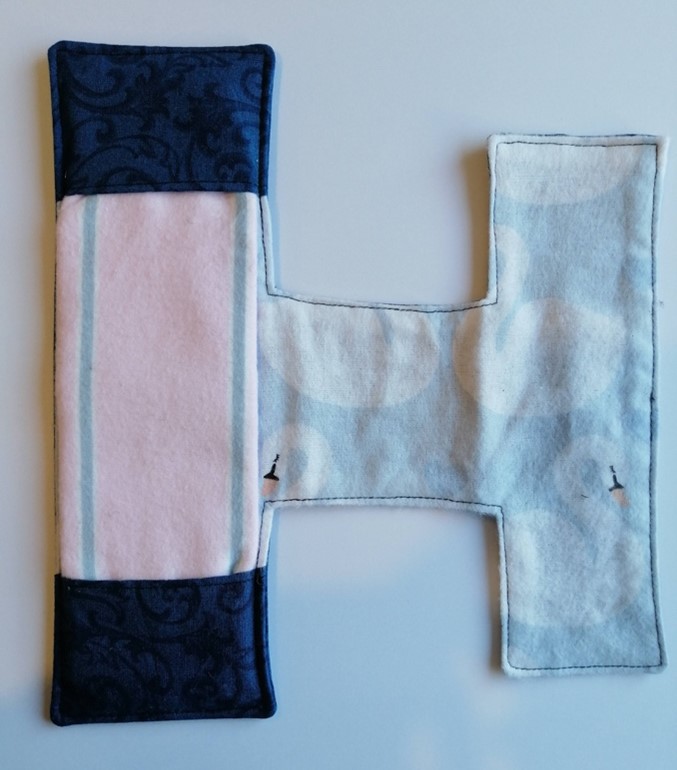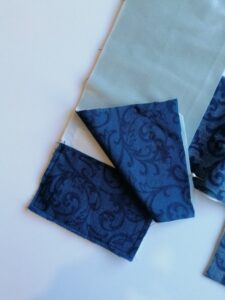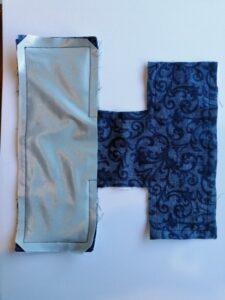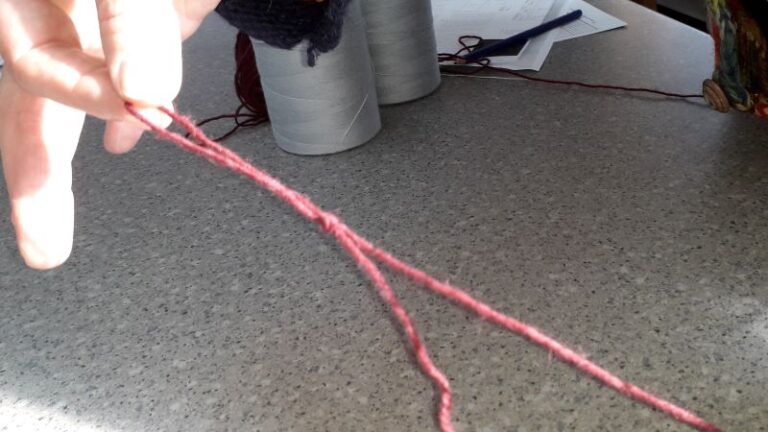
Outrigger: Rainy Day
Materials:
- Flannelette fabric
- Quilter’s cotton fabric or similar
- PUL fabric
- Fabric scissors
- Sewing machine
- Pins or quilting clips
- Iron and ironing board or pressing mat
- Sewing thread
Sourcing fabric:
We use retired flannelette and summer 100% cotton sheets, second hand fabrics from op shops or Stitch Kitchen, or scraps from other projects. PUL can be purchased at the Loom Room in North East Valley. We use cotton thread which can be composted when the pad is no longer of use.
End of use:
When this pad is no longer of use cut away the topstitching around the PUL layer. The PUL layer can be removed and put in the rubbish along with the topstitching surrounding it. The remaining layers and section without PUL can be composted or burned.
Preparation:
Cut out paper pattern
Iron fabric
Pin paper pattern to fabric, or draw around the paper pattern. Cut one flannelette Body Upper, one quilter’s cotton Body Backer, one PUL Body Inner, two quilter’s cotton Pockets on the fold, one flannelette Insert Backer, one flannelette Insert Upper, and one PUL Pouch
Outrigger: Rainy Day
Materials:
- Flannelette fabric
- Quilter’s cotton fabric or similar
- PUL fabric
- Fabric scissors
- Sewing machine
- Pins or quilting clips
- Iron and ironing board or pressing mat
- Sewing thread
Sourcing fabric:
We use retired flannelette and summer 100% cotton sheets, second hand fabrics from op shops or Stitch Kitchen, or scraps from other projects. PUL can be purchased at the Loom Room in North East Valley. We use cotton thread which can be composted when the pad is no longer of use.
End of use:
When this pad is no longer of use cut away the topstitching around the PUL layer. The PUL layer can be removed and put in the rubbish along with the topstitching surrounding it. The remaining layers and section without PUL can be composted or burned.
Preparation:
Cut out paper pattern
Iron fabric
Pin paper pattern to fabric, or draw around the paper pattern. Cut one flannelette Body Upper, one quilter’s cotton Body Backer, one PUL Body Inner, two quilter’s cotton Pockets on the fold, one flannelette Insert Backer, one flannelette Insert Upper, and one PUL Pouch
Outrigger: Rainy Day
Materials:
- Flannelette fabric
- Quilter’s cotton fabric or similar
- PUL fabric
- Fabric scissors
- Sewing machine
- Pins or quilting clips
- Iron and ironing board or pressing mat
- Sewing thread
Sourcing fabric:
We use retired flannelette and summer 100% cotton sheets, second hand fabrics from op shops or Stitch Kitchen, or scraps from other projects. PUL can be purchased at the Loom Room in North East Valley. We use cotton thread which can be composted when the pad is no longer of use.
End of use:
When this pad is no longer of use cut away the topstitching around the PUL layer. The PUL layer can be removed and put in the rubbish along with the topstitching surrounding it. The remaining layers and section without PUL can be composted or burned.
Preparation:
Cut out paper pattern
Iron fabric
Pin paper pattern to fabric, or draw around the paper pattern. Cut one flannelette Body Upper, one quilter’s cotton Body Backer, one PUL Body Inner, two quilter’s cotton Pockets on the fold, one flannelette Insert Backer, one flannelette Insert Upper, and one PUL Pouch

Layer the Body Upper and Backer together right side to right side, then PUL on top – shiny side up. Pin all three layers together close to the edges

Sew around the edges using 1cm seam allowance leaving a 5cm gap on the upper edge of smaller side to turn the pad inside out

Trim outer corners diagonally, clip inner corners without cutting through the seam

Layer the Body Upper and Backer together right side to right side, then PUL on top – shiny side up. Pin all three layers together close to the edges

Sew around the edges using 1cm seam allowance leaving a 5cm gap on the upper edge of smaller side to turn the pad inside out

Trim outer corners diagonally, clip inner corners without cutting through the seam

Layer the Body Upper and Backer together right side to right side, then PUL on top – shiny side up. Pin all three layers together close to the edges

Sew around the edges using 1cm seam allowance leaving a 5cm gap on the upper edge of smaller side to turn the pad inside out

Trim outer corners diagonally, clip inner corners without cutting through the seam